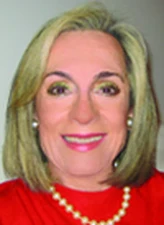Susanna Zerbini

The 2009 Vening Meinesz Medal is awarded to Susanna Zerbini for her important contributions to the development of modern satellite geodesy and its applications to geodesy and geodynamics.
Geodesy has greatly benefited from space age and the technological advancements of the past thirty years. New terrestrial and satellite measurement techniques have revolutionized the determination of the Earth’s figure and of its gravity field and improved within a short time span its accuracy by more than two orders of magnitude. This has turned geodesy into an important discipline of Earth system sciences.
Dr. Susanna Zerbini belongs to those scientists who gave shape to this development. Her field of research is geodesy and geodynamics. The emphasis is thereby on the use of advanced satellite techniques and in recent past also terrestrial observations for tectonic studies and sea level research.
The following will address some of Susanna Zerbini’s contributions:
In the pioneering days of satellite geodesy balloon satellites were observed optically by cameras. Due to their size and low weight complicated modelling of the influence of solar radiation pressure had to be developed. Dr. Zerbini was one of the first who identified such anomalous orbital effects and attributed them to the change of the shape of the satellites by solar radiation.
She developed a semi-dynamical method of precision orbit determination for LAGEOS-1 satellite laser ranging, that could be employed for the analysis of baseline determination and monitoring between pairs of tracking stations. She applied this approach to the Mediterranean area and the San Andreas fault.
She was leading the science part of the Italian side of the joint NASA/Italian satellite mission LAGEOS-2. LAGEOS-1 and 2 are still extremely valuable satellite missions, providing important information on low gravity harmonics, temporal changes of the Earth’s flattening and fundamental physics.
From the beginning of the nineties Dr. Zerbini is involved in studies of mean sea level. She coordinated the two European Union projects SELF-1 and 2. The aim of them was the synchronization by GPS of a large ensemble of tide gauges in the Mediterranean and Black sea. It allows the separation of sea-level changes from tectonic movements. In recent years she works on the coordinated use of ensembles of superconducting gravimeters combined with GPS for the analysis of temporal changes in gravity and for the purpose of separation of tectonic movements from mass changes.
Since 1987 Dr. Susanna Zerbini is associate professor at the department of physics of the University of Bologna, where she also earned her Ph.D. in physics in 1972. She was visiting scientist at the Geo-astronomy division of the Harvard-Smithonian Center for Astrophysics in Cambridge/Ma from 1975 to 1976 and from 1977 to 1978. Her research has been published extensively, mostly in refereed journals. She served as co-editor and guest editor for Journal of geodynamics and Global and Planetary Change and is co-editor of several books. Dr. Zerbini is IAG fellow since 1999; she received the Gold Badge Award of EGS in 2001.
Because of her prominent role in satellite geodesy and geodynamics she was asked to become member of a large number of important committees, such as ESA review panels, chair person of “Space Geodesy and Global Sea Level” of the International Lithosphere Program, chair person of the WEGENER Project, president of the Geodesy Section of EGS, member of the external advisory group on “Global Change, Climate and Biodiversity” of the 5th framework program of the EU, member of the Comité des Programmes Scientifiques of CNES, member of the board of administrators of the Italian Space Agency and many more.
Susanna Zerbini played an important role in building close ties between the research communities of Europe and the United States in the field of space geodesy and geodynamics. In 1988 a workshop entitled “The Interdisciplinary Role of Space Geodesy” was held in Erice/Italy. More than 100 of the most prominent scientists from the fields of space geodesy and Earth sciences were invited to discuss the future role of space geodesy for Earth sciences. The book with the same title was edited by Ivan Mueller and Susanna Zerbini. For space geodesy it marks the starting point of a new era with important contributions for the understanding of System Earth. Susanna Zerbini contributed greatly to this development, as a scientist and as a scientific leader. This makes her an excellent candidate for the Vening-Meinesz Award of the European Geophysical Union.
